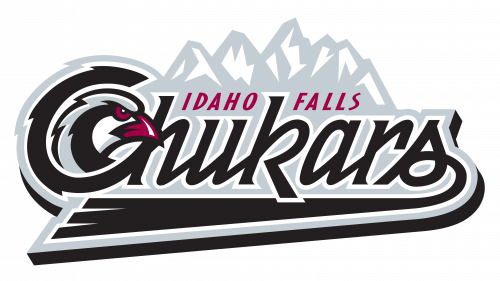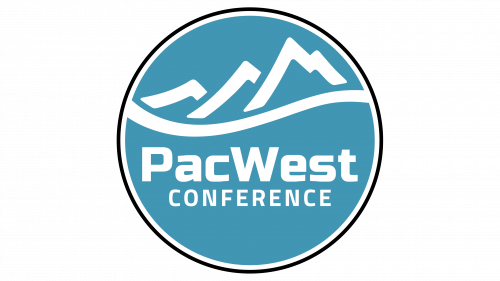Mountains as natural formations are deeply rooted in the human psyche because of the values they represent. In a logo, these towering structures often express a brand’s underlying principles and aspirations. Over the decades, many global brands have chosen this emblem to represent ideas ranging from stability and longevity to vision and growth.
A mountain top is often a testament to achievement and perseverance. For many, it signifies the culmination of effort, similar to a person reaching the pinnacle of their aspirations or overcoming severe challenges. This symbolism resonates with a wide audience, making it an effective element of branding strategy.
While some brands may use tranquil mountain landscapes that evoke a sense of peace, stability, and balance, others choose rugged and towering peaks that symbolize courage, ambition, and grandeur. The choice depends largely on what essence the brand wants to convey to its target audience.
In many cultures, mountains are revered as sacred places that connect the earthly realm with the divine. Logos with mountain motifs can also tap into these deeper spiritual feelings, connecting brands to values such as integrity, purity, and higher purpose.
There are many mountain logos in the corporate world. Each one reflects the core values, ethics, and vision of the brand. A detailed examination of these logos allows us to understand the deep meaning they carry.
What do mountains represent in a logo?
Logos that include images of mountains evoke many interpretations. Mostly, they hint at the spirit of adventure and the basis of stability. However, the basic meaning of a logo featuring mountains can vary significantly depending on the nature of the brand.
Various elements play a crucial role in the perception of a mountain in a logo. Design, color palette, and angles of the image can significantly affect what the mountain will be – calm or imposing. In the symbolism associated with mountains, we can distinguish several important directions:
Escape and freedom
Mountains, these towering natural formations, evoke feelings of tranquility and liberation, standing apart from urban centers and their constant hum. They represent places untouched by the hustle and bustle of daily life, where serenity reigns.
Many people seek refuge near these majestic formations, hoping for a brief respite from their busy lives. The idea of vacationing near mountains has a special appeal: you can breathe clean, unpolluted air, listen to the echoes of silence, and feel far away from the constraints of urban existence.
Unlike noisy cities with established norms and societal expectations, mountains are environments unconstrained by man-made boundaries. They are a reminder of the world beyond deadlines and schedules, beckoning the weary to experience a sense of release and recuperation.
Strength and stability
Mountains – majestic formations rising above the surface of the Earth – epitomize the unbridled power and majesty of nature. These huge structures testify to the indomitable spirit and resilience of nature. Their towering peaks and steep slopes are a challenge that beckons adventurers and tests the limits of human endurance.
Their significance is so great that these grand landforms have shaped the topography of the earth and have had a profound impact on human culture and symbolism. Their grandiosity and steadfastness often serve as metaphors for the insurmountable difficulties and obstacles humans face.
In fiction and fairy tales, the inherent properties of mountains are used to shape the characters of heroes, endowing them with traits that echo the power and endurance of these wonders of nature. Often, in literature and popular culture, there are characters who embody the power and majesty of mountains, personifying both physical and moral fortitude. The fact that a famous character in the TV series Game of Thrones is named after these towering formations emphasizes their influence and the qualities they represent. The depiction of such characters serves as a reminder of the awe-inspiring strength and resilience that mountains have come to symbolize over the centuries.
Spirituality
Mountains, with their towering peaks pointing skyward, have long been a symbol of spiritual ascension and divine intimacy. Their majestic heights make them revered places, bringing man closer to the celestial and divine. Historically, these elevated places were chosen for the erection of religious buildings, churches, monasteries, or temples.
The very act of climbing a mountain making a difficult journey upward, can be seen as a metaphor for spiritual enlightenment and self-knowledge. In different eras and cultures, mountains have served as places of pilgrimage where the faithful have made arduous treks to reach the summit, symbolizing their journey to spiritual growth and understanding.
The solitude and tranquility of these heights provide ideal conditions for meditation and introspection. This may explain the fact that many religious buildings and spiritual centers are located on top of or among these majestic formations.
Nature
Mountains, these colossal formations towering above the earth, epitomize the unprecedented majesty and endurance of nature. Created over millennia by tectonic forces rather than by human hands or technological advances, they carry an eternal majesty.
Their symbolic power is not lost in branding and business. Many businesses wishing to convey a sense of longevity, stability, and an unwavering commitment to natural principles often incorporate images of mountains into their logos.
The use of mountain motifs by corporations can signify rootedness in tradition and, at the same time, constant evolution, much like the mountains themselves. The presence of these natural giants in corporate imagery often sends a powerful signal of a company’s commitment to sustainability and organic growth.
Adventure and exploration
For generations, mountains have served as a symbol of courage and exploration. These majestic formations beckon the bold and curious with their call, epitomizing the grandeur of nature.
Their towering silhouettes carry an enchantment of otherworldly beauty, but mountains are more than just an enchanting sight. Over time, they have evolved into huge arenas for a variety of exciting activities. Apart from traditional trekking and climbing, these elevations are home to activities such as skiing on glistening snow slopes, speleotourism in hidden caves, and even base jumping for adrenaline junkies.
In the great tapestry of adventure stories, mountains occupy a place worthy of reverence. They represent a double challenge that tests not only physical strength but also the resilience of the human spirit. Mountains inspire, challenge, and captivate hearts and minds with every ascent, descent, and passage.
Protection
Mountains, with their powerful shapes and towering peaks, often act as symbolic bastions of defense and protection. Their unyielding nature allows them to remain steadfast in the face of the tests of time and external pressures. Thanks to these features, many animal and plant species have adapted to live exclusively in these high mountain areas, utilizing their distinctive protective properties. Particular fauna adapted to high mountain conditions find refuge in rugged cliffs and valleys. Similarly, certain plants that have unique adaptive properties and benefit from the distinctive microclimate and soil composition grow in these regions.
Brands looking to emphasize values such as longevity, protection, and resilience can find inspiration in the symbolism of a mountain. Such a symbol in a brand image, such as a logo, can effectively communicate these qualities to an audience, promising reliability and unwavering commitment.
Challenges and achievement
Mountains, literally and metaphorically, have always had a deep significance in the history of human perseverance. Often, in colloquial parlance, complex challenges are likened to these towering formations, emphasizing the enormity of the task at hand.
Although the word “mountain” has become colloquially synonymous with serious challenges, its symbolism does not end there. Successfully traversing a mountain, whether a physical peak or a metaphorical obstacle, is a celebration of human resilience and achievement. Mountains serve as a constant reminder of the beauty of hardship. They encapsulate a journey that begins at the base, with hardship and ultimately triumph at the summit.
Unpredictability and mystery
Mountains, with their vast expanses and complex topography, hold many mysteries waiting to be discovered. Their remote and often inaccessible locations do not allow for comprehensive exploration, which gives their elevation a certain mystique. This mystique attracts adventurers, explorers, and those with an unquenchable curiosity about the natural world.
At the heart of some mountains are dormant volcanoes that conceal explosive power beneath their serene surface. This unpredictable nature serves as a reminder of the fickle dynamism of the earth’s geology. The presence of these hidden volcanoes heightens the intrigue surrounding the mountains, emphasizing their dual nature of beauty and potential danger.
These majestic formations not only represent the mysteries of the natural world but also symbolize challenges to be overcome. The unknown elements of mountains and their inherent risks make them attractive subjects of literature, art, and popular culture.
Brands with mountain logos: Famous mountain logos
Emblems inspired by mountains reveal a lot about an organization’s ethos and identity. Often imbued with deep symbolism, such emblems are associated with qualities such as perseverance, unwavering dedication, and innate responsibility for customer well-being. If a brand logo features mountain elements, it often indicates a reverent attitude towards nature or environmental awareness.
Familiarity with well-known global brands that use mountain symbols in their logos shows that these motifs have a lasting and universal appeal. Such design decisions are not arbitrary. They carry an implicit guarantee that a brand reflecting the unshakable nature of mountains is reliable and durable.
The preference for mountain-themed logos among some brands may indicate their environmental initiatives or connection to outdoor activities. Such logos act as silent ambassadors, conveying the brand’s principles, aspirations, and standards without uttering a word.
Adidas
Adidas, a global sports brand, has an emblem that, while not a direct representation of mountains, subtly echoes the essence of peaks and summits. The current emblem is three diagonal stripes, each increasing in size from left to right.
These ascending lines, reminiscent of a mountainside, subtly convey the themes of determination, perseverance, and the desire to overcome challenges in the logo. Mountains traditionally symbolize obstacles, but they also represent overcoming those obstacles. The symbolism has not gone unnoticed by those behind the brand either, with Peter Moore, Adidas’ creative director, noting that these angular stripes embody the essence of facing challenges and realizing goals. Through this design, Adidas conveys athleticism and a spirit of constant development and growth.
Allegheny Mountain Collegiate Conference
The Allegheny Mountain Collegiate Conference (AMCC for short) is a renowned intercollegiate conference in NCAA Division III. The conference’s reputation stems from the fact that its members are institutions located in northeastern Pennsylvania and New York State.
The AMCC emblem skillfully uses an allusion to the famous Alleghany Mountains of the United States. The choice of a minimalistic emblem, devoid of unnecessary complexity, provides a clear and direct representation of the mountains. The use of a serif font further enhances the image of the conference, creating an atmosphere of steadfastness and reliability. Such thoughtful design decisions reflect the core values and solidity that the group strives to convey to its audience.
Appalachian League
The Appalachian League is the premier summer baseball organization focused on the Appalachian regions of West Virginia, Virginia, Tennessee, and North Carolina. More than just a summer pastime, the league is closely tied to USA Baseball’s prospect development program, which is a key factor in identifying and nurturing future baseball talent. Its ties to Major League Baseball reinforce its importance in baseball.
The Appalachian League logo is indicative of its regional roots. The depiction of the Appalachian Mountains on the logo is no accident – it is a tribute to the region the league represents. In addition to the geographical reference, the emblem symbolizes many virtues: strength in the face of adversity the wisdom that comes with experience. All of these elements are woven into the structure of the league, and the logo serves as a beacon that testifies to its unwavering commitment to these ideals.
Aquafina
Aquafina, created from the manufacturing strength of PepsiCo, is a recognizable brand of purified bottled water in the U.S. market. In addition to its core product, water, the brand offers a range of skincare products, including anti-wrinkle and lip moisturizers. Since its launch in 1994, the brand has incorporated the image of a mountain into its logo.
Aquafina creates an image of elegance, reliability, and rejuvenation using a blue and gray palette. Blue is often associated with tranquility and freshness, which aligns perfectly with the promise of clean, refreshing water. Gray, on the other hand, evokes a sense of stability, reaffirming the brand’s commitment to consistent quality. The inclusion of a touch of red, accentuated by the image of the sun, subtly introduces an element of excitement and energy. This color scheme, combined with the image of mountains, perfectly captures the essence of Aquafina, showcasing the purity of nature and the brand’s passionate commitment to refreshing hydration.
Asheville Tourists
The Asheville Tourists team is firmly entrenched as a notable minor league baseball team in the South Atlantic League. With a history spanning over a hundred years, the team’s legacy is intertwined with the Tourist’s name, signifying their long-standing presence in the sport. The company’s emblem has a modern style, using a variety of blue tones to symbolize depth, stability, and trust.
The emblem depicts a clear silhouette of towering mountains just behind the word “Tourist.” A baseball hovers above this picturesque image, hinting at the trajectory of a powerful strike. This image not only speaks to the team’s baseball prowess but also metaphorically hints at their ambition and desire to continually raise their level of play. The combination of the mountains and the baseball rising up emphasizes the team’s desire to push boundaries and set new benchmarks in their game.
Big Sky Conference
The Big Sky Conference is a notable pillar among college athletic associations, holding a significant place in NCAA Division I, especially in soccer. Its member institutions are located throughout the western United States, and each contributes to the conference’s rich tapestry of athletic and academic heritage.
The conference emblem features a strong, mesmerizing design. It features an artistic depiction of mountain ranges elegantly placed at the base of a rectangular background. This geometric combination emphasizes the western mountainous regions where the conference is located and conveys a dynamic sense of forward motion. This skillful composition subtly hints at the relentless drive and commitment to excellence both on and off the field by the teams performing under its banner.
Brumbies
The Brumbies rugby team, colloquially known as the ACT Brumbies, proudly represents the Canberra region of Australia. The team is a formidable member of the esteemed Super Rugby league, taking its name from the wild horses common in the vicinity of the capital city.
In the Brumbies emblem, the dominant motif is mountains, embodying key regional features. These mountain images pay homage to Canberra’s iconic locales, emphasizing the team’s deep connection to the homeland. The emblem uses a vibrant palette, combining shades of blue, gray, and yellow. This vibrant color palette is specifically chosen to reflect the energy and spirit of the team and provide a distinctive identity against rival teams.
Coors
The famous Coors Brewing Company, based in the United States, consistently uses mountain motifs in the visual design of its products. While in the Coors Light variant, the mountain pattern is noticeably accentuated, even the brand’s foundational emblem subtly features this element.
Coors utilized the pure water of the Rocky Mountains to produce the beer, infusing each brew with a touch of nature’s finest. The design isn’t just a random image of a mountain; it draws inspiration from Wilson Peak, a majestic peak that is a testament to the majesty of nature. In this visual, Coors seamlessly intertwines its heritage with nature, offering a sip of tradition and purity with every drink.
Evian
Evian is the hallmark of bottled water that has gained global recognition. Rooted in French heritage, the brand quenches thirst with mineral-rich water sourced from the neighborhood of Evian-les-Bains. Evian’s history began in 1829 in France, and over time, the brand has become part of the extensive portfolio of multinational company Danone.
The Evian emblem, as a subtle hint to its origins, depicts the majesty of the mountains of the Alps. These towering peaks point to where the famous spring water originates and embody the brand’s ethos. By using such vivid imagery, Evian shows its continued commitment to creating products that are fresh, pure, and unspoiled by the essence of nature. The brand reaffirms its idea that each bottle is a respect for the pristine nature.
Idaho Falls Chukars
The Idaho Falls Chukars are an independent baseball team showcasing their skills in the Pioneer League, a non-major League Baseball team. Located in the scenic Idaho Falls neighborhood, the team’s emblem proudly features the majestic Rocky Mountains.
The emblem represents the team’s resilience and the majesty of the region. Carefully crafted, the emblem radiates energy, inspiring admiration and aspiration in those who see it. It serves as a visual reminder of the team’s roots and its unwavering commitment to excellence.
Mount St. Mary’s Mountaineers
Mount St. Mary’s Mountaineers, representing Saint Mary’s University, is a renowned student athletic program in the heart of Maryland, USA. Their sportsmanship is recognized in many divisions of the National Collegiate Athletic Association.
In the very name “The Mount,” emphasized by the mountain-shaped emblem, lies an ode to lofty aspirations for excellence. This emblem is a metaphor for the peaks of achievement they strive to conquer and the benchmarks they set in college sports. The combination of gold, blue, and white in the emblem draws the viewer’s attention and symbolizes a sense of honor, depth, and purity. These elements reflect the values, aspirations, and rich heritage of the Mountaineers.
National Park Service
The National Park Service (NPS) is a well-respected agency administered by the U.S. federal government. It is charged with the management and preservation of all national parks and a number of national monuments. This critical agency was created in 1916 by the U.S. Congress, initiating a focused effort to preserve the nation’s natural treasures.
The NPS emblem is both symbolic and reflective of its mission. The image of mountains emphasizes the agency’s commitment to preserving the nation’s diverse landscapes and natural wonders. Complementing this image is the buffalo, often considered a symbol of American wildlife and representing the rich biodiversity of these protected areas. The inclusion of various trees and vast grassy plains further shows the breadth of ecosystems managed by the NPS. Through these images, the emblem reflects the vastness and diversity of America’s natural heritage, emphasizing the NPS’s vital role in preserving it.
Northwest Conference
The NorthWest Conference (NWC) is a prominent athletic consortium competing in NCAA Division III competition. It covers the Washington and Oregon regions and includes member teams diligently fighting for their reputation in college sports.
The NWC emblem depicts mountain formations. Although they are depicted in a minimalistic, almost abstract style, evoking the feeling of a random sketch, their significance cannot be understated. They subtly convey the relentless desire for excellence that the conference and its participating teams epitomize. The mountains combined with the background take center stage; they encourage the viewer to look beyond simplicity and realize their deepest goals.
Pacific West Conference
The Pacific West Conference, commonly referred to as the PacWest, holds an important place in college athletics, particularly within NCAA Division II. The conference encompasses a range of sports, showcasing talents from the precision of golf and the agility of tennis to the dynamic play of basketball and the enduring spirit of cross-country running.
The PacWest conference emblem stands out with its depiction of mountain formations. Despite the modern, minimalistic design, these peaks carry a deep symbolism. This simple yet evocative imagery is designed to resonate with a vast number of followers, supporters, and enthusiasts, effectively embodying the values that the Pacific West Conference stands for in the competitive world of college sports.
Paramount
Paramount Global, commonly known as Paramount, boasts an iconic mountain-shaped emblem that is instantly recognizable to many. Originating from the United States, this multinational giant provides its entertainment and media services in many parts of the world.
Considered one of the world’s leading movie producers, Paramount is not just limited to the silver screen: its presence is palpable on television as well, with dedicated network channels. In its past endeavors, the company has successfully used the motto “reaching new heights,” which sheds light on the essence of its logo. It subtly conveys the company’s desire to provide viewers around the world with the highest level of entertainment.
Prudential
Prudential Financial, founded in 1875, has become a bright star on the American financial scene and is proudly listed in the Fortune Global 500. This well-respected company is not limited to its American roots: its influence and operations span more than 40 countries, demonstrating its international recognition. Offering insurance, investment management, and retirement strategies, the company has demonstrated sustainability throughout its history.
At the heart of Prudential’s visual style is the ‘stone’ emblem. Combined with the evocative likeness of mountainous terrain, it serves as a silent promise to clients. This symbolism gives them the assurance that their financial aspirations and concerns are in safe and capable hands, promoting peace of mind in their monetary endeavors.
Rocky Mountain Athletic Conference
The Rocky Mountain Athletic Conference, often referred to as the RMAC, is a prominent organization in NCAA Division II. Its influence is felt primarily in the western United States, particularly in the state of Colorado, where most of its member institutions are located. The conference’s emblem naturally emphasizes the iconic Rocky Mountains.
The emblem design is strikingly geometric, taking inspiration from the pentagonal shape, perhaps reflecting the versatility of the conference’s athletic endeavors. The depiction of mountains in this design showcases the topographical features of the region and complements the overall configuration of the emblem. The choice of gold and blue as the dominant colors is not only due to aesthetic considerations. Gold is often associated with grandeur, success, and distinction, while the trustworthy blue color is associated with reliability, dignity, and depth. These elements create an emblem that speaks to RMAC’s commitment to sporting excellence, regional representation, and the high standards they uphold.
Sierra Mist
The widely known Sierra Mist is one of the most popular lemon-lime flavored soft drinks under the PepsiCo umbrella. At one stage of its branding, the drink was called “Mist Twist” but eventually reverted back to its authentic and more common name. The symbolic depiction of the Sierra mountain region in the logo is not only an indication of the name but also a strategic move to emphasize the refreshing and crisp essence of the drink.
The emblem artfully combines shades of shimmering silver and pristine white, mimicking snow-capped peaks that symbolize purity and freshness. Cheerful yellow and green tones, reminiscent of the lemon and lime included in the drink, harmoniously balance it. Together, they create a picture of zest and coolness, conveying the essence of the drink.
Tipos Extraliga
Established in Slovakia, the Tipos Extraliga is the pinnacle of the country’s hockey leagues. This league is recognized as the fifth strongest in Europe and proudly positions itself as the sixth strongest in the world. A unique feature of this league is the adaptability of its name due to the fact that it has partnered with various sponsors over time, resulting in the league’s name changing frequently.
The league’s emblem successfully utilizes images of towering mountains that echo the cool atmosphere of the hockey environment. Such visual imagery plays a crucial role in shaping the uniqueness of the league, showing its prestige in the world of sports. The appeal of the logo is emphasized by the harmonious combination of red, white, and blue colors, making it memorable and distinctive to viewers.
Toblerone
Toblerone, a well-known confectionery manufacturer, is famous for its delicious chocolate and competent use of negative space in branding. Since its inception in 1908, this chocolate company has left a mark in the form of unique triangular segments of its bars that resemble mountain peaks.
And while the central Toblerone logo doesn’t always explicitly feature mountain elements, this motif is certainly present on most packaging. Inspired by the Swiss Alps, Toblerone’s mountain design echoes the iconic Matterhorn. But the intriguing aspect is that the mountain details cleverly incorporate the silhouette of a bear. This gives the branding depth, paying homage to Bern, often referred to as the “city of bears,” and emphasizing the brand’s Swiss origins. Such original branding nuances show Toblerone’s heritage and its connection to its place of origin.
West Virginia Black Bears
The West Virginia Black Bears, originally from West Virginia, are a prominent summer baseball team active in the MLB league draft. West Virginia’s topographical features, marked by iconic mountain ranges, serve as a fitting backdrop for the team’s emblem, reflecting geographic and cultural ties.
The team emblem features a complex design that interweaves symbolic elements. The foreground depicts majestic mountain peaks, signifying the natural beauty of the state. Behind these peaks is an artfully placed baseball, mimicking the radiant sun and giving the emblem depth as well as emphasizing the sport. Additional design details further enrich the emblem’s story: a distinctive word mark draws attention, and the image of a black bear adds character, rooting the emblem in regional symbolism. Together, these elements create a story of sport, regional pride, and natural beauty.
Tips for creating logos with mountains
Mountain-themed logos often favored for their powerful imagery and ability to convey qualities such as strength, resilience, and ambition, require thoughtful consideration in the design process. Images of mountains can symbolize overcoming challenges, reaching the pinnacles of success, and resilience in the face of competitors. To effectively harness the power of such imagery, it’s important to act strategically and thoughtfully during the design process. Here are some detailed guidelines to help ensure that mountain motifs in logos really resonate:
Focus
When determining the focus of a logo, it’s important to consider those elements that most effectively communicate the brand’s message or values. For some companies, mountains act as a secondary element that reinforces or complements other components of the logo. In such cases, the mountain image is a subtle background that allows other elements to stand out.
For other organizations, the mountain is the primary element, emphasizing longevity, grandeur, or connection to nature. In such cases, the mountain image is the first thing that catches the viewer’s attention, and it carries significant weight in the overall brand perception.
Deciding on the visual hierarchy is the key to effective logo design. It determines the order in which different elements draw the viewer’s attention. Think about which elements should attract attention immediately and which can be additional or secondary. This will help focus the consumer’s attention and better understand the essence of the brand.
Businesses should think about what elements they want to include and how they interact to convey the desired message or feeling. Whether an element should be the center of attention or play a supporting role is a decision that depends on how well it fits the brand’s personality and the message it wants to convey.
Color
The power of color in logo design is undeniable. Just as certain symbols convey different messages, colors carry their own set of emotions and associations. When designing mountain-themed logos, hues reminiscent of natural environments, such as white, blue, and green, are often favored. These hues evoke feelings of calmness, reliability, and freshness.
Going beyond the traditional palette allows the logo to be more vibrant and stand out from the crowd. Using non-traditional colors allows you to look at the logo from a new perspective, catching the attention of viewers. This unique color choice can add novelty to a design and make it instantly memorable.
While traditional color schemes evoke a familiar response, non-traditional tones can bring novelty and innovation. It’s important for businesses to choose colors that best match their brand identity and the emotions they want to evoke in their target audience.
Style
Choosing the perfect image of a mountain in a logo requires careful consideration of the aesthetics and practicality of the design. Some prefer minimalism, clean lines, and simplicity, which often results in timeless and universal designs. On the other hand, intricate images provide a depth of detail that can convey a richer narrative or emphasize specific mountain features.
The potential problems associated with using intricate designs must be considered. Because logos are used in a variety of mediums – from large billboards to tiny digital icons – detailed elements can lose clarity when scaled down. This can be a problem in the digital realm, where logos need to be clear and distinguishable across a variety of devices, from desktop monitors to mobile screens.
Given the increasing importance of digital platforms for commerce and brand recognition, ensuring a logo is clear and impactful at all sizes is paramount. The design should reflect the brand’s values and vision and be versatile enough to maintain its integrity across different applications.
Reference
The image of a mountain in a logo can be not only aesthetically pleasing but also convey a history or connection to a specific locale. Choosing between a generic mountain image and a location-specific image can carry different information to the target audience.
Many companies choose to highlight specific mountains or ranges in their branding, especially if they relate to their origins, values, or heritage. By prioritizing a recognizable silhouette or feature, companies can evoke a deeper resonance with those who are familiar with that geographic feature. This can be a subtle allusion to the area they are from or the environment in which they operate.
When a company highlights a local or well-known mountain in its branding, it often signals a commitment to regional identity, authenticity, and rootedness. This can foster a sense of trust and familiarity with local customers.
The choice depends on what message the company wants to convey. Does it want to emphasize local ties and heritage, or does it seek a broader, perhaps global, vision? Both approaches have merit and can be powerful tools for brand identity and building customer relationships.
Accompanying elements
The inclusion of a mountain in a logo can give it visual appeal and thematic depth, but it rarely acts as a stand-alone design element. Most companies combine it with additional elements, with a verbal sign, which can be the name or slogan of the organization. The interaction of graphic and textual components is very important, as it forms an integral corporate identity.
When combining the mountain with textual elements, the choice of font and typography comes to the forefront. The chosen font should harmonize with the visual elements while reinforcing the brand ethos. A sleek, modern font can speak of innovation and forward-thinking, while a traditional serif font can speak of stability and heritage.
The placement of these elements plays an important role in the effectiveness of the logo. The placement of the mountain in relation to the text can either draw attention to the mountain or balance the viewer’s attention between the two. Font size, letter spacing, and even lettering (uppercase vs. lowercase) can have a significant impact on readability and aesthetic appeal.
Just as the choice of a specific or generic mount can convey different aspects of an organization, so too can the style of text. The font and typography chosen should continue the brand’s story, revealing its character and aspirations.
Every aspect of the logo – from the specific image of the mountain to the accompanying text – should be carefully considered. This includes the color scheme, font type, and layout – all of which combine to form a cohesive visual representation that immediately communicates the essence of the brand to the target audience.
Why do companies use logos with mountains in them?
Using mountains in logos is an effective way to reflect certain attributes and ethics inherent in a brand. Majestic and unwavering mountains symbolize stability, longevity, and ambition. This universal symbolism lends itself to a variety of industries, from outdoor sports to financial services.
However, this motif should be approached with caution. For all their grandiosity, mountains can also carry challenges and obstacles if they are not properly represented. This duality can sometimes send an unwanted message to the audience, especially if the visual composition is not harmonious.
Collaborating with experts in the field allows you to convey the desired message. Hiring experienced logo designers or branding agencies allows for an outside perspective, often combining creativity with an understanding of the market. These professionals will help the company create an image that reflects the essence of the brand and resonates with the target audience.
A customized design, developed with the help of experts, ensures that the logo will stand out in a crowded marketplace and truly embody the brand’s values and mission. Before embarking on a logo design, seek the help of experts, and you can create a distinctive and meaningful emblem.
























